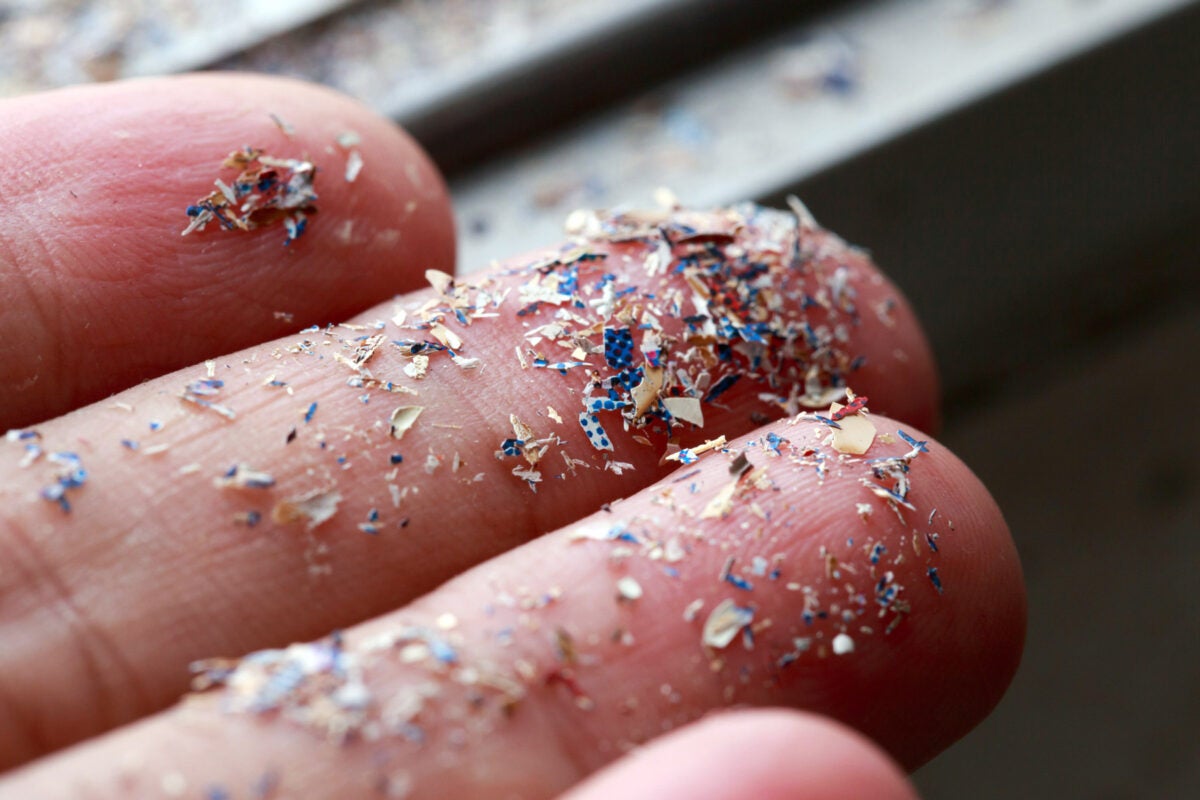
Opinion
Getting microplastics out of our system
We’re all continuously exposed to a toxic stew of microplastics, which float through the air, permeate our water, and settle on our food. That’s because single-use plastic is everywhere—and only nine percent of it gets recycled. The rest makes its way into landfills, oceans, and incinerators, where it gradually breaks down into tiny particles small enough to enter our lungs and bloodstreams.
Indeed, the average American eats, drinks, and breathes in more than 70,000 microplastic particles every year. A recent study shows a steady increase in microplastic exposure among birthing women at Hawaii’s largest maternity hospital. In 2006, six out of 10 placentas tested from pregnant women contained detectable levels of microplastics. In 2021, all ten placentas did.
For the record, there should be no plastic present in human placentas—and not just because the health effects of microplastics aren’t yet fully understood for developing fetuses.
What we do know is that exposure to microplastics negatively impacts human health, and has been linked to neurological conditions, poor cardiometabolic health, and fertility issues.
As a mother, a fertility doctor, and a scientist focused on reproductive health, I care deeply about these issues. And I’m not alone. Just last month, the United Nations Environment Programme convened an intergovernmental committee at its headquarters in Kenya to continue developing a global “plastic treaty.” The draft treaty, if adopted, would be a legally binding agreement on countries that sign up; it includes a global cap on all plastic production with specific targets and timelines.
Sign up for Harvard Public Health
Delivered to your inbox weekly.
I’m not opposed to all plastic, especially in a medical setting. My own premature twins required neonatal intensive care support, including plastic-based life support materials like IV tubing, fluid bags, and an incubator. I am also grateful for the plastic polymer mesh that is now sewn into one of my children’s diaphragms to repair a congenital defect.
Some plastic is necessary, but most of the time, it’s not. Even in health care. My colleagues and I produce about one bag of plastic trash for every oocyte (egg) retrieval procedure we perform. Time-intensive surgeries can yield up to six bags of plastic trash. Even routine pelvic exams can generate plastic waste because hospitals regularly consider the labor involved in sterilizing and reusing equipment like metal speculums to be too costly. Instead, many practices use plastic ones.
Such waste is avoidable. The toll of all this waste is beginning to sink in among clinicians and health system leaders. Massachusetts General Hospital, where I work, has launched a Center for the Environment and Health, which strives to integrate sustainability into all research, education, and patient care decisions. Among other initiatives, the center is working with vendors on efforts to reduce packaging materials and recycle used products wherever possible. When assessing the cost of a particular purchase, the center considers life-cycle costing, among other holistic tools, which looks at the total environmental and health impact of a product, from production to disposal.
As health care professionals, we need to press all our hospital systems to adopt similar approaches. Hospitals also need to do a better job of educating clinicians about the collective impact of seemingly small decisions, such as whether to use a plastic or metal speculum for a pelvic exam.
Health care is just one industry that produces outsized amounts of plastic waste. Everyone in the medical and public health fields must build awareness of the health impacts of microplastics. Good education campaigns actually work—and we have some highly successful models to draw on. California’s first-in-nation statewide microplastics strategy includes education initiatives to alert the public of the health and environmental risks of single-use plastics. California is also working to develop standardized methods for detecting microplastics, tracking their source, and assessing their impact on vulnerable ecosystems. These data will provide a critical foundation for future action.
All of us in the health care and public health professions must join scientists and policymakers in support of state, national, and global efforts to reduce plastic waste, and encourage breakthroughs in better, more sustainable packaging.
Doing so can help stop the disturbing amount of plastic we’re seeing in our ecosystems, and our bodies. Our planet deserves better—and so do we.
Top image: pcess609 / istock


